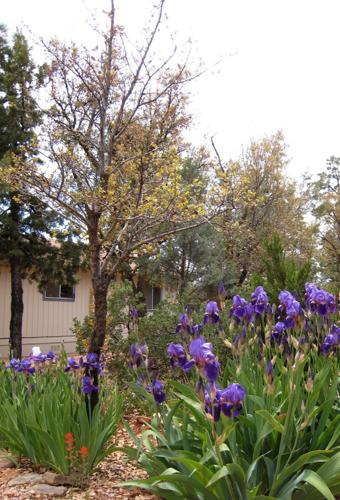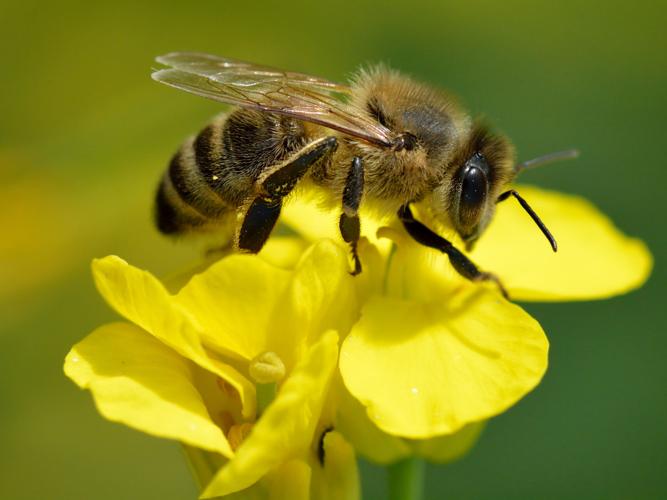Question: We live in Sycamore Canyon, Corona de Tucson area. A local landscaper planted three 24-inch box mastic trees for us in January this year. They looked very healthy at the time of planting. Within a month, the backs of the leaves, on all three trees, had become severely spotted (see photos attached). At that point they had been getting drip irrigation equal to one hour every other day.
When the weather warmed, we increased it to two hours every other day. There has been quite a bit of new growth on all the trees and the new growth looks healthy, but we are concerned that the trees are diseased or infested, though we cannot see any bugs. Can you diagnose this problem ?
Answer: I think it’s likely your trees are suffering from either transplant shock or a weather-related disease. The old growth looks stressed but the new growth looks great. I recommend waiting to see how your trees respond through the spring. Your watering and patience may be enough until the stress of transplanting subsides and they grow through the leaf spot problem. Keep an eye on it to see if the new growth continues to look good or if the damage gets worse. We can always take a closer look at a sample of the leaves if things don’t improve.
Q: Transplanted iris bulbs with roots and leaves intact to pots. Tips of leaves now brown. Water daily and place pots near the front door with filtered sunlight throughout the day. Hoping for flowers someday. Believe our zone in Tucson doesn’t lend itself to summer blossoms. Maybe spring. Is it true, iris grow like weeds here in the Old Pueblo? We have caliche soil so I am leery about transplanting to our garden.
A: Sometimes soil becomes too salty over time due to our water and fertilizer. Brown leaf tips is a common symptom of this salt damage. Another possibility is that they need more frequent watering. Containers dry out quickly so you might need to water twice daily. It really depends on the size of the container.
Also, make sure the soil drains well after watering. Some irises do better in the desert than others but in general they do well so you shouldn’t worry about transplanting to your garden if the conditions are right.
Q: I’m hoping you can settle an argument between my husband and myself. He says there are no longer any regular honey bees in Arizona — that they all have been Africanized. I find it hard to believe that the bees buzzing my flowers are the African killer bees.
A: You can both be correct, depending on how you frame the question. It is true that all feral or wild honey bees are considered to be Africanized. It is also true that many kept honey bees by our local beekeepers are not Africanized.
For example, beekeepers will often purchase Russian or Italian honey bees for their managed hives. Because all honey bees are the same species (Apis mellifera) they can and will interbreed. Over time managed colonies may become hybridized by mating with feral honey bees. So, the bees buzzing your flowers could be either. It’s not easy to tell them apart on the fly because they don’t have physical differences you can spot without laboratory equipment.






